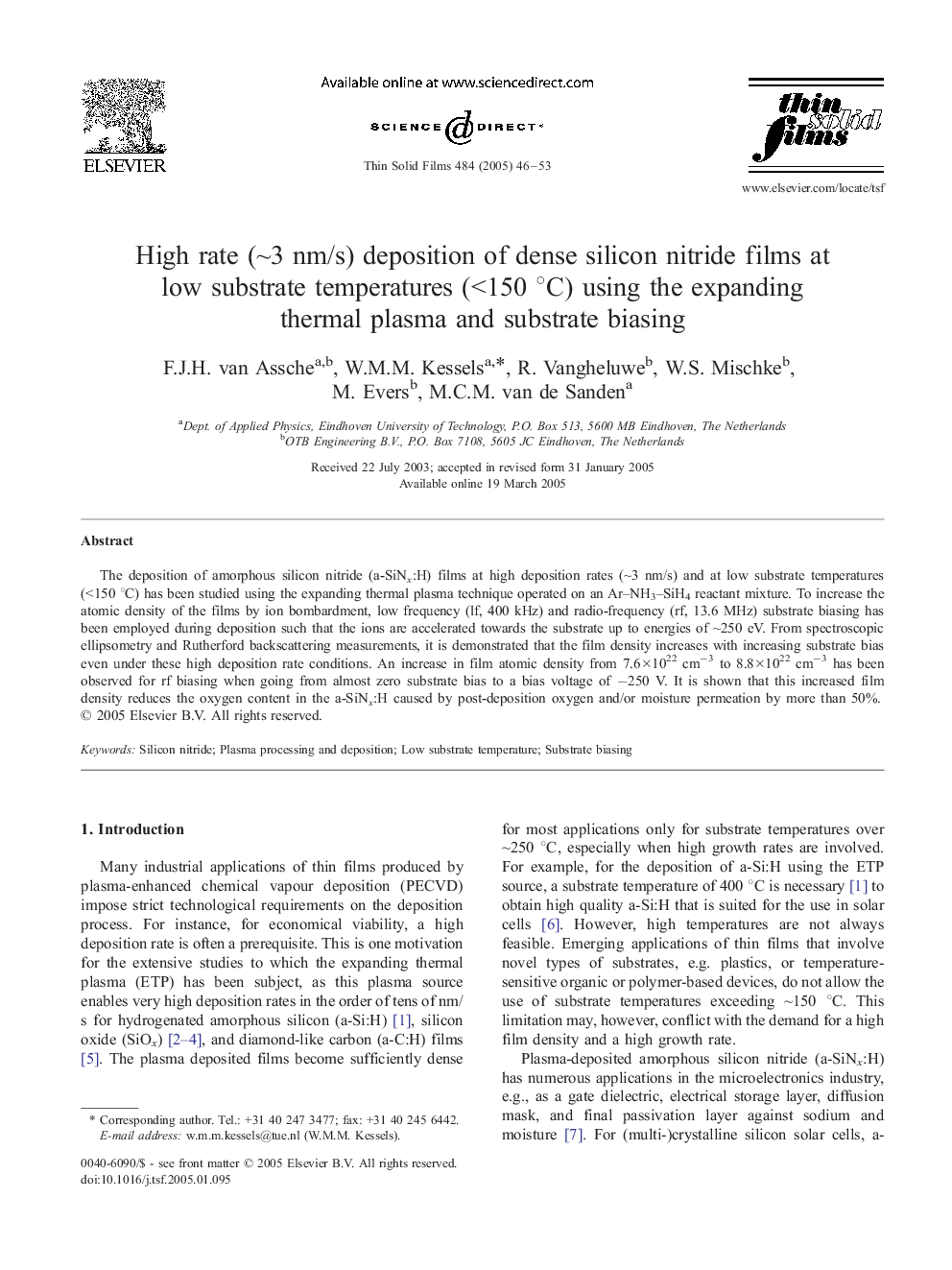| Article ID | Journal | Published Year | Pages | File Type |
|---|---|---|---|---|
| 9812520 | Thin Solid Films | 2005 | 8 Pages |
Abstract
The deposition of amorphous silicon nitride (a-SiNx:H) films at high deposition rates (â¼3 nm/s) and at low substrate temperatures (<150 °C) has been studied using the expanding thermal plasma technique operated on an Ar-NH3-SiH4 reactant mixture. To increase the atomic density of the films by ion bombardment, low frequency (lf, 400 kHz) and radio-frequency (rf, 13.6 MHz) substrate biasing has been employed during deposition such that the ions are accelerated towards the substrate up to energies of â¼250 eV. From spectroscopic ellipsometry and Rutherford backscattering measurements, it is demonstrated that the film density increases with increasing substrate bias even under these high deposition rate conditions. An increase in film atomic density from 7.6Ã1022 cmâ3 to 8.8Ã1022 cmâ3 has been observed for rf biasing when going from almost zero substrate bias to a bias voltage of â250 V. It is shown that this increased film density reduces the oxygen content in the a-SiNx:H caused by post-deposition oxygen and/or moisture permeation by more than 50%.
Related Topics
Physical Sciences and Engineering
Materials Science
Nanotechnology
Authors
F.J.H. van Assche, W.M.M. Kessels, R. Vangheluwe, W.S. Mischke, M. Evers, M.C.M. van de Sanden,
